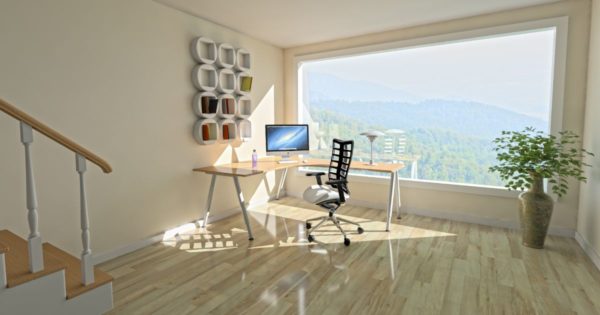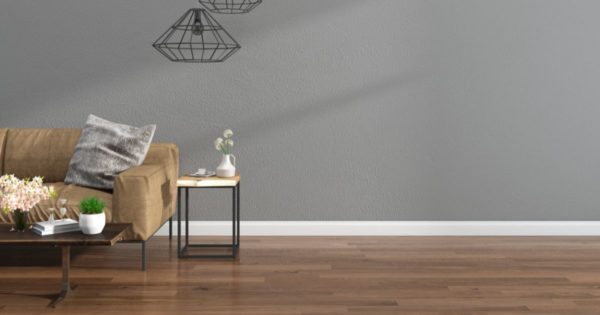A Guide on How to Match Wall Color with Wood Floor
Ensuring that all the colors in the room complement each other is a fun, important, yet challenging task. Floors and walls are the largest surfaces in a room. This means that the color choice of these two surfaces is vital for creating an inviting atmosphere.
If you're having trouble choosing a wall color that complements your existing wooden flooring, or vice versa, we've got you. We've curated this guide to teach you how to match wall color with wood floors. We’ve also included the best design and construction practices and furniture choices to follow moving forward. Are you excited? We know we are!
Let's jump right into the details! Remember, design decisions hold the fort when they're backed by attested counsel.
What Are Cool Tones and Warm Tones?
Let's start by understanding the difference between warm and cool tones. Before you decide on a light wood floor or hardwood floor — which is usually a matter of rugged or softer build — orange, red, or yellow undertones define a warm tone and grayish or taupe undertones define a cool tone. Cool tones also include blues, purples, and greens.
Selecting Wall Color for Existing Floor

Just remember this — if your walls have warm undertones, light wood floors with warm tones will complement your room. However, if you're going with a cool undertone on your walls, you'll be better off with cool undertones on the floor as well.
You may choose it the other way around though — meet the colors halfway through your ornaments, rugs, and furniture. It's all about being creative and whatever looks and feels good!
Start looking into beige, off-white, and cream colors if you have warm tones on your wooden floor. Go with cooler colors, perhaps even grayish paint for a cool tone.
Generally speaking, if you want your room to feel cozy, you should move forward with warm tones.
Finding the Right Match
As we mentioned, if your walls have a hint of cool tones, check out soft or hardwood floors of maple, ash, and white oak. Hickory, birch, and beech are good for warm tones. Zero in on your choice by considering the following tips:
Start by Choosing Between Softwood Floors or Hardwood Floors
This section isn't about colors — we've already explained the tones and undertones synergy above. This is about whether you're fine with a less-pronounced grain or would rather prefer a rugged, scratch-resistant floor.
Softwood floors do not have a vessel — think of them as a picture of wood, laminated onto high-density fibreboard. Hardwood floors, on the other hand, are made from real wood.
Hardwood floors are further divided into solid wood flooring and engineered flooring. The former includes pieces of wood cut into proper planks and the latter contains a solid top layer of wood with a plywood base.
The term lightwood floors are usually used for vinyl flooring that's made to look like wood. It has its own pros and cons.
Once you're through with that decision, you can choose between warm and cool tones to settle the color scheme.
Walls Should Have Light Colors: White Adds Visual Space
As weird as it may sound, white paint makes the room bigger and brighter. It provides more room for the light to reflect, creating an open and airy feel.
Try this the next time you walk into a space with dark ceilings. You'll instantly feel a sense that the ceiling is closing in on you. That's because dark colors reflect little-to-no light, giving you less visibility in nooks and crannies as opposed to a white color, which lets you observe little spots from afar.
This is why most people prefer white, beige, and cream-ish wall paint in their homes. You can choose these to go with your dark wood floor, be it hardwood or soft, or light wood floors. As long as you have bright and light walls, your floor, and wall color combination will come out looking great.
Next time you see somebody indulging in the light walls vs. dark walls debate, let them have at it in their dungeon. Jokes aside, some people prefer dark environments and that's completely all right. Nothing like a dark hardwood floor paired with black walls, cool warm lights, and a yellow accent wall.
Oh, and we almost forgot — if you're still interested in other paint colors, perhaps use a bit of smoke green or light blue to do an accent wall!
When Unsure, Sample Floor and Wall Colors Together
No matter how good you are at visualizing paint colors, there's no substitute for seeing them together. Store owners who sell tiles or wooden floors will have them displayed against different hues to give the customers a visual aid so they can make a decision easily.
You can also try patching various colors near the baseboard. If that feels like too much of a hassle, just google the wall-floor color combination you think will be a good fit and it'll give you several options. You might even realize that the color combination you initially chose doesn't look as good when it's installed in the space.
You can also try out some colors that are out of your comfort zone. You just might find a better matching color scheme. We advise looking at the samples for about 24 hours before you finally make a decision.
It'll give you ample time to question your ideas, think about them from other decorative perspectives, and help you zero in for a regret-free decision.
How to Match Wall Color with Wood Floor: More Ideas and Tricks

Matching wall color with wood floor isn’t exactly a single-step task. You’ve got to take into consideration the techniques we’ve mentioned above. The following tips should also help:
You Can Never Go Wrong with Complementary Colors
When it comes to matching the colors of floors and walls, it's best to play safe. How? Do black and white. Do dark brown and beige. Go with cool tones and do a light gray accent wall, cool white on the other walls, and ivory wood flooring. The options are endless!
If you're unsure about color variations, just look at a color wheel. When you look directly across from one color, you'll find its complementary hue. Wooden floors with orange tones look good when paired up with blue walls. A cherry wood floor looks good with light green shades.
If you're still confused, just look up some catalogs as a visual aid.
When in Doubt, Go with Neutral Colors
Do you know what's neutral? White, light brown, beige, and even gray. They're the simplest colors and can be filtered into the same palette easily. By definition, neutral shades lack saturation and intensity. They have a minimal, light hue that can be utilized to create a beautiful, inviting space with neutral undertones.
In simple words, neutral colors are always a safe bet. Remember, neutral wall colors look better with cool undertones. Pair them up with a nice couch, furnishings, lamps, and ornaments to add flair to your space.
Choosing the Right Furniture
Furniture and decorative ornaments can add a whole new flair to a space. Don't like the floor and wall color combination? No problem. Get a nice rug that complements the color palette.
Install curtains, get a tapestry, get accent tables, a TV console, the list is endless! If you're designing your living room, you're going to need to rely on a couch, coffee table, and a rug that goes below it. If you have an open kitchen attached to the living room with a dining area close by, get a rugged, rustic dining table.
Pay attention to the furniture's color. Did you make some mistakes while choosing the floor and wall colors? No problem! Undo the damage. Zero compromises on the furniture's polish. Go minimal, buy grand — it's your call!
Don't Forget the Undertones
The subtle notes in your wall paint and flooring may not look like much, but they'll ultimately help define the popular colors in your space. Off-white wall paint may not pop out until you pair it up with a similar light hardwood flooring.
An addition of a rug with cool undertones might make your whole living space pop.
The point is, undertones can make a huge overall impact and you must never ignore them. If anything, you should continuously be mindful of the subtle colors in your walls, floors, furniture, and windows.
Consider Light Requirements
Natural light will make your place look good during the day, but are you installing the correct lights? Or are you going for cool undertones only to mistakenly end up with warm lights?
You see, you can get the best of both worlds. Design your walls and floors for cool tones and install warm lights. Your place will look cool during the day and will have a cozy, warm touch once the sun sets.
If you're all about that cabin feel, you'll have to pair warm colors with warm lights. We suggest that you never go all-in on cool tones — try natural LED lights. Its hue falls somewhere between warm and cool.
Wall and Floor Color Ideas to Get You Going
Use Professional Help
Still confused? Can't settle for a color combination? No problem. Choosing wall and floor coloring is surely a challenging task. You have to consider light requirements, the amount of natural light coming in, and what's trending out there.
There's no reason for you to sit down scratching your head and stressing out if you can't make a decision. Just hire some consultants who will choose the colors for you. They would likely have existing color combinations in their catalogs, and it'll make your decision super easy.
Summing Up: It All Comes Down to Personal Preference
Whether you're into dark floors or light wood floors, warm undertones or cool ones, neutral tones, or accent walls, it's all okay.
Matching your wall's color with a wood floor can feel overwhelming at first, particularly because it's a decision you have to make amid dozens of other construction-related decisions. It's better to sit with your ideas for a while. Picture the perfect space and make decisions months before you have to hire paint and flooring professionals.
While it's a matter of personal preference, we still suggest that you think things through. Don't make an out-of-trend decision. Sit with your choice. Let the ideas come to you naturally. Consult with professionals. Discuss it with friends who have recently painted their homes.
Your home is your safe space. A place where your family will grow and make memories. The least you can do is make sure that it's an inviting space.
Last Updated on November 11, 2022 by Tom Bradly
